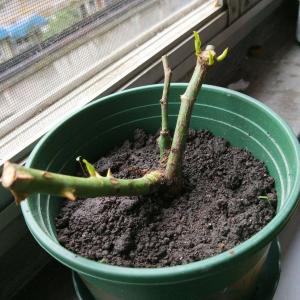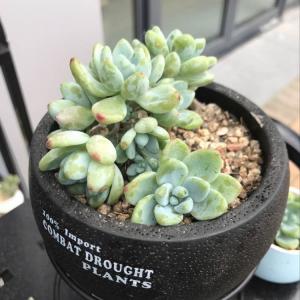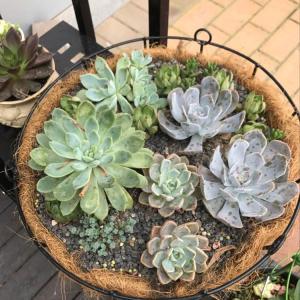文章
权问薇
2018年05月10日

花谢后剪花剑促开花
蝴蝶兰花谢后,如果想继续开花,有两种选择:一、当年二次开花;二、第二年再次开花。两种选择对应不同修剪方法哦~

1、当年二次开花
找一把剪刀,先用酒精擦拭一下,将花剑基部保留4个节点,以上部分全部剪掉,放在有阳光的温暖的地方继续养。
这样修剪的蝴蝶兰会在2-3个月后再次开花,但是需要注意这样植株养分消耗过大,不利于来年的生长。
2、第二年再次开花
将蝴蝶兰的将花剑从底部全部剪掉,适当补充一点磷酸二氢钾。
这样修剪之后的蝴蝶兰进入修养阶段,悉心养护等待第二年绽放更多花朵。
剪后养护
花谢后,剪花剑是最重要的一步,但不是到此为止了。想要蝴蝶兰长得更好,还需要以下几步。

1、株体脱盆
将株体轻轻从花盆中脱出,把根系上的泥土去掉,不要伤及其幼嫩的肉质根。
2、修剪根部、黄叶
把老根、烂根以及黄叶剪去。
3、消毒晾晒
用双氧水或者多菌灵溶液,浸泡半个小时,放于通风处稍微晾干。
4、苔藓包裹根部上盆
用浸泡透的新苔藓将根部包起来上盆即可,注意应使根系均匀分开,不能几条根挤靠在一起。
蝴蝶兰日常养护
修剪好了花谢后的蝴蝶兰,接下来就要好好进行日常养护了,这样才能确保蝴蝶兰再次开花。

1、浇水
蝴蝶兰什么时候浇水要视具体情况而定,主要依据盆土的干湿情况,可采用牙签法进行判断。
将牙签入土中,十分钟后拔出。如果牙签只是有一点湿,就需要浇水。如果过湿,则不需要。
2、施肥
在长苗期以均衡肥(氮磷钾等元素均衡搭配)为主,催花时候主要高磷肥,如磷酸二氢钾(催花时候光照要适当增加),花苞接近花生仁大小后停止施肥。
水苔种植的可以两次水一次肥,树皮种植的一次水一次肥,偶尔1-2个月使用一次高磷肥。
3、光照
蝴蝶兰喜散光,忌阳光直射。冬天可阳光直射,加重花色。
4、经常通风
蝴蝶兰喜温暖的环境,但忌闷养,一年四季要保持通风良好,可放于窗边。
常见病症
没有养蝴蝶兰经验的花友,一看到蝴蝶兰茎叶腐烂,半死不活的样子就想扔掉,简直是太可惜了!花花教你如何解决蝴蝶兰常见病症。

1、茎腐
茎部上有黑斑,并慢慢腐蚀整个茎部。主要是水过多,盆内不透气,水份散发不出去等闷坏了茎部。
处理方法:重新换盆,修剪烂根并消毒根部,挖掉黑斑。涂上酒精或碘酒在伤口,伤口愈合后重新上盆,没愈合之前干养每天给兰株多喷水。
2、黄叶
蝴蝶兰新梢顶部萎缩,嫩叶淡黄,老叶也渐暗黄。原因是积水久湿导致土壤缺少氧气,部分根须腐烂。
处理方法:应该控制浇水并停止施肥,按实际水苔干湿程度浇水。可放于通风处加快盆土水分蒸发。
3、烂根
浇水不当等导致盆土积水或者盆土本身通透性较差,都会引起蝴蝶兰烂根。
处理方法:
(1)剪掉腐烂部分
将株体脱盆,用净水将根部冲洗干净,剪掉烂根,尽量保留完好部分。
(2)消毒处理
将剪口和残留的根用高锰酸钾2‰溶液泡10分钟,晾干,再用草木灰把剪口涂抹好。
(3)重新上盆
重新上盆时,将根茎部按实,浇透水,放于遮阴处,罩上薄膜,保持20℃左右,大约20天就能长出新根。
修剪后的蝴蝶兰照样可以开的很漂亮
重要的是还节省了再次买花的钱!
觉得文章还不错的话
分享给朋友吧~
蝴蝶兰花谢后,如果想继续开花,有两种选择:一、当年二次开花;二、第二年再次开花。两种选择对应不同修剪方法哦~

1、当年二次开花
找一把剪刀,先用酒精擦拭一下,将花剑基部保留4个节点,以上部分全部剪掉,放在有阳光的温暖的地方继续养。
这样修剪的蝴蝶兰会在2-3个月后再次开花,但是需要注意这样植株养分消耗过大,不利于来年的生长。
2、第二年再次开花
将蝴蝶兰的将花剑从底部全部剪掉,适当补充一点磷酸二氢钾。
这样修剪之后的蝴蝶兰进入修养阶段,悉心养护等待第二年绽放更多花朵。
剪后养护
花谢后,剪花剑是最重要的一步,但不是到此为止了。想要蝴蝶兰长得更好,还需要以下几步。

1、株体脱盆
将株体轻轻从花盆中脱出,把根系上的泥土去掉,不要伤及其幼嫩的肉质根。
2、修剪根部、黄叶
把老根、烂根以及黄叶剪去。
3、消毒晾晒
用双氧水或者多菌灵溶液,浸泡半个小时,放于通风处稍微晾干。
4、苔藓包裹根部上盆
用浸泡透的新苔藓将根部包起来上盆即可,注意应使根系均匀分开,不能几条根挤靠在一起。
蝴蝶兰日常养护
修剪好了花谢后的蝴蝶兰,接下来就要好好进行日常养护了,这样才能确保蝴蝶兰再次开花。

1、浇水
蝴蝶兰什么时候浇水要视具体情况而定,主要依据盆土的干湿情况,可采用牙签法进行判断。
将牙签入土中,十分钟后拔出。如果牙签只是有一点湿,就需要浇水。如果过湿,则不需要。
2、施肥
在长苗期以均衡肥(氮磷钾等元素均衡搭配)为主,催花时候主要高磷肥,如磷酸二氢钾(催花时候光照要适当增加),花苞接近花生仁大小后停止施肥。
水苔种植的可以两次水一次肥,树皮种植的一次水一次肥,偶尔1-2个月使用一次高磷肥。
3、光照
蝴蝶兰喜散光,忌阳光直射。冬天可阳光直射,加重花色。
4、经常通风
蝴蝶兰喜温暖的环境,但忌闷养,一年四季要保持通风良好,可放于窗边。
常见病症
没有养蝴蝶兰经验的花友,一看到蝴蝶兰茎叶腐烂,半死不活的样子就想扔掉,简直是太可惜了!花花教你如何解决蝴蝶兰常见病症。

1、茎腐
茎部上有黑斑,并慢慢腐蚀整个茎部。主要是水过多,盆内不透气,水份散发不出去等闷坏了茎部。
处理方法:重新换盆,修剪烂根并消毒根部,挖掉黑斑。涂上酒精或碘酒在伤口,伤口愈合后重新上盆,没愈合之前干养每天给兰株多喷水。
2、黄叶
蝴蝶兰新梢顶部萎缩,嫩叶淡黄,老叶也渐暗黄。原因是积水久湿导致土壤缺少氧气,部分根须腐烂。
处理方法:应该控制浇水并停止施肥,按实际水苔干湿程度浇水。可放于通风处加快盆土水分蒸发。
3、烂根
浇水不当等导致盆土积水或者盆土本身通透性较差,都会引起蝴蝶兰烂根。
处理方法:
(1)剪掉腐烂部分
将株体脱盆,用净水将根部冲洗干净,剪掉烂根,尽量保留完好部分。
(2)消毒处理
将剪口和残留的根用高锰酸钾2‰溶液泡10分钟,晾干,再用草木灰把剪口涂抹好。
(3)重新上盆
重新上盆时,将根茎部按实,浇透水,放于遮阴处,罩上薄膜,保持20℃左右,大约20天就能长出新根。
修剪后的蝴蝶兰照样可以开的很漂亮
重要的是还节省了再次买花的钱!
觉得文章还不错的话
分享给朋友吧~
1
2
文章
张祥明
2018年05月10日

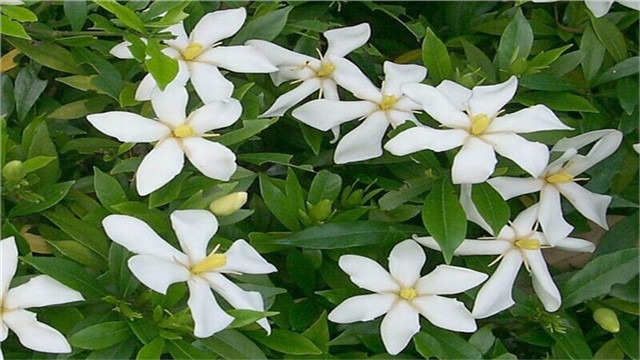
1、浇水失当
原因:给栀子花浇水太少,会导致植株缺水无法开花;给它浇水太多也可能会使它烂根,从而难以开花。
解决方法:若是平时浇的水太少就为它多浇一点水,但要注意一次不能浇太多。若是平时是浇的水太多,就在它的花盆下面点石块,然后将它放到通风好的环境之中慢慢养护。等它恢复之后按照科学的方法浇水。
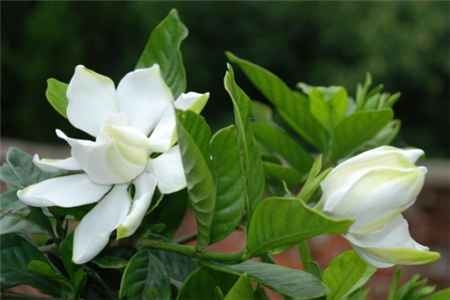
2、施肥不当
原因:给栀子花的肥料太少,会导致植株因为没有足够的养分而难以开花;给它施用的肥料过多可能会影响到它的根系,也会使得它难以开花。
解决方法:若是平时施的肥料太少,就适量提高施肥的频率,不过要使用稀释过的肥料,最好是施用磷钾元素含量较高的肥料。若是平时施肥太多,就用大量清水冲洗土壤,将多余的肥料冲出来,然后放到通风处晾干。等它恢复之后按照科学的方法施肥。

3、光照不当
原因:给栀子花太长时间的阳光照射,会导致植株被晒伤,从而难以开花;给它的光照时间太少,会影响到它正常的生长,同样会使它难以开花。
解决方法:若是平时光照时间太长,就将它放到半阴的地方养护,并且减少每天的见光时间。若是缺少光照,就将它放到阳光充足的地方养护。
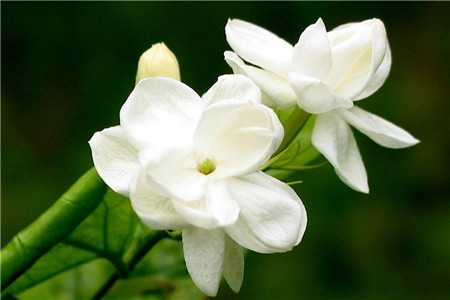
2
3
文章
张祥明
2018年05月10日

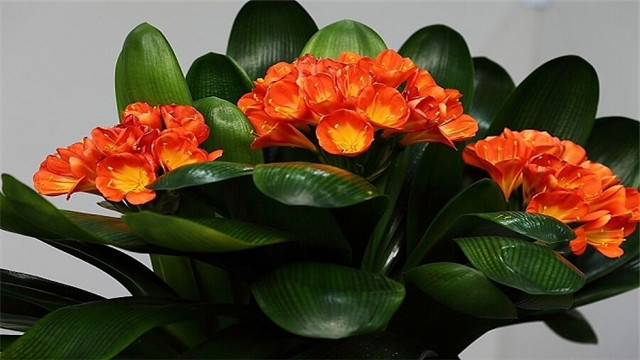
1、调节温度
原因:君子兰在20℃左右的时候生长的最好,若是温度太低,低于15℃,它的部分生理活动无法正常进行,就会产生不少问题,比如夹箭。
解决方法:将君子兰移动到18-20℃的环境之中,进行养护。期间可以用绳将子它两边的叶子都绑在一起,并将它放在暗处,这样做更利于它花箭的抽出。

2、增加施肥
原因:君子兰抽箭需要一定的养分,如果不及时施肥,给它更多的养分,它就会因为难以汲取到足够的营养而发生夹箭。
解决方法:及时为它施加肥料,最好是含磷含钾的肥料。在施用前需要将肥料稀释一下,以免它的浓度太高伤到了花。一次不要加太多的肥,要薄肥勤施。

3、修根重栽
原因:君子兰的根部受到了损伤,无法正常的从土壤之中汲取营养,植株营养缺乏,自然就无法正常抽箭了。
解决方法:将君子兰整个从花土中取出来,然后找到它受伤坏掉的根须,用消过毒的刀子切掉,然后用新的土壤重新栽种。
4、增加浇水
原因:君子兰在抽箭的时候需要消耗大量的水分,若是没有足够的水分供应,它也无法正常抽箭。
解决方法:及时给它浇水,之后要让土壤保持湿润,不能使之干掉。要注意浇水要少量多次,一次不能浇太多,以免土中产生积水损伤植株根系。

1
1
文章
Miss Chen
2018年05月09日

Description: This herbaceous perennial plant develops 1-2 compound basal leaves during the spring. The blades of these leaves are 3-7" long and 3-7" across; they are ascending to more or less parallel with the ground. Each leaf blade is divided into 3 leaflets (1 terminal & 2 lateral leaflets). In less developed leaves, the leaflets are pinnate-pinnatifid, ultimately dividing into narrow parallel lobes. However, in more developed leaves, each leaflet divides into 3 subleaflets, and these subleaflets are pinnate-pinnatifid, ultimately dividing into narrow lobes. The ultimate lobes of these leaves are ¼–½" long and about 3 mm. (1/8") across; they are linear, linear-elliptic, or linear-oblanceolate in shape with entire (toothless) margins and bluntly acute tips. The upper leaf surface is grayish green to medium green, glabrous, and sometimes slightly glaucous, while the lower leaf surface is white to greenish white, glabrous, and very glaucous. For each compound leaf, the petiolule (basal stalklet) of the terminal leaflet is longer than those of the 2 lateral leaflets. The petioles of the compound leaves are 3-6" long and ascending; they are pale red to pale reddish green, terete, glabrous, and often glaucous.
An inflorescence consisting of a raceme of flowers sometimes develops shortly after the formation of basal leaves. This inflorescence is 6-12" tall and it is either erect or ascending. The peduncle (basal stalk) of the inflorescence is pale red or pale yellowish green, terete, glabrous, and glaucous. Each raceme has 3-10 pendant flowers. The corolla of the pendant flower is ½–¾" long, mostly white, narrowly obcordoid in shape, and somewhat flattened. Two fused outer petals form the rounded nectar spurs (above), the lateral sides, and the pair of of upturned lips (below) of the corolla. Two fused inner petals form a pair of transverse crests and a pair of small inner claws near the entrance of the corolla. The small lips are shaped like keeled hoods with translucent parallel veins. The flat crests are half-cordate in shape, slightly wrinkled, slightly undulate, and white; sometimes they are pinkish along their bases. Inserted within the corolla is a pistil with a single style and several stamens. There are also a pair of tiny sepals; they are about 2-3 mm. long, linear-lanceolate in shape, and light pink with whitish margins. The nodding pedicels of the flowers are pale green or pale reddish green, terete, glabrous, and sometimes glaucous; they are up to ¼" long. At the bases of these pedicels, there are solitary floral bracts about 3-5 mm. long; they are ovate to obovate in shape and light pink with whitish margins.

The blooming period occurs during mid-spring for about 2-3 weeks. The flowers have a sweet fragrance. Afterwards, fertile flowers are replaced by drooping seed capsules that become about 12 mm. (½") long at maturity; these capsules are ovoid in shape and somewhat flattened. Each capsule divides into 2 parts to release its seeds; there are several seeds per capsule. The seeds are 1-2 mm. long, short-reniform in shape, and obscurely reticulate; each seed has an attached elaiosome (food appendage). The foliage dies down by mid-summer. The root system consists of a cluster of yellow globoid corms and fibrous roots.
Cultivation: The preference is dappled sunlight to medium shade, mesic conditions, and a loose loamy soil with decaying organic matter. Growth and development occur during the spring. Germination of the seeds can be slow and difficult, although it may be possible to start new plants by separating some of the corms. Insects and disease organisms are rarely troublesome.

Range & Habitat: The native Squirrel Corn occurs primarily in NE, east-central, and the southern tip of Illinois, where it is uncommon (see Distribution Map). Illinois lies toward the western range limit of this species; it is more common further to the east. Habitats include mesic deciduous woodlands, wooded bluffs, wooded slopes, ravines, and shaded stream banks. Squirrel Corn is found in high quality woodlands in Illinois, where the native ground flora is intact. It is one of the spring wildflowers that is threatened by the invasion of Garlic Mustard (Alliaria petiolata) and some Eurasian shrubs, particularly Amur Honeysuckle (Lonicera maackii).
Faunal Associations: The flowers are cross-pollinated primarily by queen bumblebees. Both nectar and pollen are available as floral rewards. The seeds are distributed to some extent by ants because of their elaisomes (food appendages). Because the foliage is toxic, it is usually avoided by mammalian herbivores. The overall value of this plant to faunal wildlife is low.

Photographic Location: A deciduous woodland at Jim Smith's farm in Vermilion County, Illinois.
Comments: This is another wonderful spring wildflower that can be found in eastern deciduous woodlands. Both the foliage and flowers of Squirrel Corn (Dicentra canadensis) are similar in appearance to those of Dutchman's Breeches (Dicentra cucullaria). Both of these species are found in similar habitats and their blooming periods overlap (Squirrel Corn begins to bloom about 1 week later). However, Dutchman's Breeches is by far the more common wildflower in Illinois. The flowers of Squirrel Corn have short rounded nectar spurs, while those of Dutch's Breeches are longer and more narrow. The basal leaves of these two species are very difficult to distinguish, although those of Squirrel Corn appear to have slightly longer ultimate lobes on average. The corms of these two species are also different in appearance: the corms of Squirrel Corn are yellow and globoid in shape, while the corms of Dutchman's Breeches are pink and more ovoid in shape.
An inflorescence consisting of a raceme of flowers sometimes develops shortly after the formation of basal leaves. This inflorescence is 6-12" tall and it is either erect or ascending. The peduncle (basal stalk) of the inflorescence is pale red or pale yellowish green, terete, glabrous, and glaucous. Each raceme has 3-10 pendant flowers. The corolla of the pendant flower is ½–¾" long, mostly white, narrowly obcordoid in shape, and somewhat flattened. Two fused outer petals form the rounded nectar spurs (above), the lateral sides, and the pair of of upturned lips (below) of the corolla. Two fused inner petals form a pair of transverse crests and a pair of small inner claws near the entrance of the corolla. The small lips are shaped like keeled hoods with translucent parallel veins. The flat crests are half-cordate in shape, slightly wrinkled, slightly undulate, and white; sometimes they are pinkish along their bases. Inserted within the corolla is a pistil with a single style and several stamens. There are also a pair of tiny sepals; they are about 2-3 mm. long, linear-lanceolate in shape, and light pink with whitish margins. The nodding pedicels of the flowers are pale green or pale reddish green, terete, glabrous, and sometimes glaucous; they are up to ¼" long. At the bases of these pedicels, there are solitary floral bracts about 3-5 mm. long; they are ovate to obovate in shape and light pink with whitish margins.

The blooming period occurs during mid-spring for about 2-3 weeks. The flowers have a sweet fragrance. Afterwards, fertile flowers are replaced by drooping seed capsules that become about 12 mm. (½") long at maturity; these capsules are ovoid in shape and somewhat flattened. Each capsule divides into 2 parts to release its seeds; there are several seeds per capsule. The seeds are 1-2 mm. long, short-reniform in shape, and obscurely reticulate; each seed has an attached elaiosome (food appendage). The foliage dies down by mid-summer. The root system consists of a cluster of yellow globoid corms and fibrous roots.
Cultivation: The preference is dappled sunlight to medium shade, mesic conditions, and a loose loamy soil with decaying organic matter. Growth and development occur during the spring. Germination of the seeds can be slow and difficult, although it may be possible to start new plants by separating some of the corms. Insects and disease organisms are rarely troublesome.

Range & Habitat: The native Squirrel Corn occurs primarily in NE, east-central, and the southern tip of Illinois, where it is uncommon (see Distribution Map). Illinois lies toward the western range limit of this species; it is more common further to the east. Habitats include mesic deciduous woodlands, wooded bluffs, wooded slopes, ravines, and shaded stream banks. Squirrel Corn is found in high quality woodlands in Illinois, where the native ground flora is intact. It is one of the spring wildflowers that is threatened by the invasion of Garlic Mustard (Alliaria petiolata) and some Eurasian shrubs, particularly Amur Honeysuckle (Lonicera maackii).
Faunal Associations: The flowers are cross-pollinated primarily by queen bumblebees. Both nectar and pollen are available as floral rewards. The seeds are distributed to some extent by ants because of their elaisomes (food appendages). Because the foliage is toxic, it is usually avoided by mammalian herbivores. The overall value of this plant to faunal wildlife is low.

Photographic Location: A deciduous woodland at Jim Smith's farm in Vermilion County, Illinois.
Comments: This is another wonderful spring wildflower that can be found in eastern deciduous woodlands. Both the foliage and flowers of Squirrel Corn (Dicentra canadensis) are similar in appearance to those of Dutchman's Breeches (Dicentra cucullaria). Both of these species are found in similar habitats and their blooming periods overlap (Squirrel Corn begins to bloom about 1 week later). However, Dutchman's Breeches is by far the more common wildflower in Illinois. The flowers of Squirrel Corn have short rounded nectar spurs, while those of Dutch's Breeches are longer and more narrow. The basal leaves of these two species are very difficult to distinguish, although those of Squirrel Corn appear to have slightly longer ultimate lobes on average. The corms of these two species are also different in appearance: the corms of Squirrel Corn are yellow and globoid in shape, while the corms of Dutchman's Breeches are pink and more ovoid in shape.
0
0
文章
Miss Chen
2018年05月09日

Description: This perennial wildflower consists of a short leafy stem (4-12" tall) and a flowering stalk (1½-3' long) that are separated from each other at the base. The leafy stem is erect, light green to reddish green, and short-pubescent; it has 1-2 pseudo-whorls of 3 compound leaves at its apex. The compound leaves are trifoliate with slender petioles about 2-3" long. Individual leaflets are 2-3½" long and 1½-2½" across; they are lanceolate-ovate to oval in shape and their margins are smooth. The upper surface of the leaflets is medium green and short-pubescent to glabrous, while their lower surface is pale green and glabrous. The terminal leaflet of each trifoliate leaf has a slender petiolule (basal stalklet) up to ¾" long, while the lateral leaflets have slender petiolules less than 1/8" long. The erect to ascending flowering stalk is light green to reddish green and short-pubescent; it is usually leafless, although a less common variety of Naked-Flowered Tick Trefoil has 1-2 trifoliate leaves. The upper part of the flowering stalk consists of a raceme or narrow panicle of flowers up to 1' long. The flowers are arranged along the stalk in widely spaced pseudo-whorls. The pedicels of the flowers and lateral branches (if any) are about ½-¾" long.
Individual flowers consist of 5 whitish pink or pale lavender petals, a short tubular calyx with blunt teeth that is greenish red to white, several stamens with white filaments, and a pistil with a single style. The corolla of each flower has a typical pea-like structure consisting of an erect banner, a straight horizontal keel, and a pair of spreading wings. The calyx is short-pubescent and its bottom tooth is larger in size than the others. The blooming period occurs from mid- to late summer for about 1 month. On each plant, only a few flowers are in bloom at the same time and they are not noticeably fragrant. The flowers are replaced by flattened seedpods called 'loments.' The loments usually have 2-3 one-seeded segments (less often, 1 or 4 segments); the upper side of each segment is straight or slightly concave, while the lower side is convex or rhombic. The lateral sides of each loment are covered with short hooked hairs; each loment has a long stipe (about ½" long) at its base and a shorter beak (less than ¼" long) at its tip. Each segment of the loment is about 8 mm. (1/3") long. The root system consists of a short broad taproot or caudex. This wildflower reproduces by reseeding itself.

Cultivation: The preference is light to medium shade, mesic conditions, and a slightly to moderately acidic soil containing sand, rocky material, or loam with decaying organic matter. The root system of this wildflower fixes nitrogen into the soil via symbiotic bacteria.
Range & Habitat: Naked-Flowered Tick Trefoil is occasional in central and southern Illinois, while in the northern section of the state it is uncommon (see Distribution Map); it is native. Habitats consist of mesic beech-maple woodlands, sandy oak woodlands, and rocky woodlands where sandstone is present. This wildflower occurs in higher quality woodlands where the native ground flora is intact.

Faunal Associations: The flowers are cross-pollinated by bumblebees, other long-tongued bees, and Halictid bees; these visitors collect pollen. Nectar is not available as a floral reward. Other insects feed on the foliage and other parts of Desmodium spp. (Tick Trefoils). These species include the caterpillars of several skippers, butterflies, and moths; the leaf-mining larvae of the Buprestid beetles Pachyschelus confusus and Pachyschelus laevigatus; the larvae of the seed weevil Apion decoloratum; the thrips Echinothrips americanus and Neohydatothrips desmodianus; and the aphid Microparsus variabilis. There are also several leaf beetles that feed on the foliage of tick trefoils: Anomoea laticlavia, Bassareus lituratus, Cerotoma trifurcata, Colaspis brunnea, Cryptocephalus insertus, Odontata dorsalis, Pachybrachis nigricornis, Pachybrachis othonus, Phyllecthris dorsalis, and Saxinis omogera. Some vertebrate animals also use these plants as a food source. The seeds are eaten by the Wild Turkey and Bobwhite, while the foliage is palatable to deer, rabbits, horses, cattle, and other mammalian herbivores. Because of the height of the flowering stalk (up to 3') and the habitat (woodlands), White-tailed Deer are probably the primary transporters of the seeds of Naked-Flowered Tick Trefoil as the loments (seedpods) can cling to fur.

Photographic Location: A sandy woodland at the Indiana Dunes National Lakeshore in NW Indiana.
Comments: Naked-Flowered Tick Trefoil is usually easy to identify because, unlike other Desmodium spp. (Tick Trefoils), it produces its leaves and flowers on separate stalks (except for an uncommon variety). While other species in this genus produce leaves that are clearly alternate, Naked-Flowered Tick Trefoil produces its leaves in pseudo-whorls. This species also has loments (a type of seedpod) with straight or slightly concave upper sides above their segments. In contrast, most species of tick trefoil have loments with convex upper sides above their segments. Naked-Flowered Tick Trefoil also prefers shady woodlands, while other species of tick trefoil usually prefer partially shaded savannas or sunny prairies.
Individual flowers consist of 5 whitish pink or pale lavender petals, a short tubular calyx with blunt teeth that is greenish red to white, several stamens with white filaments, and a pistil with a single style. The corolla of each flower has a typical pea-like structure consisting of an erect banner, a straight horizontal keel, and a pair of spreading wings. The calyx is short-pubescent and its bottom tooth is larger in size than the others. The blooming period occurs from mid- to late summer for about 1 month. On each plant, only a few flowers are in bloom at the same time and they are not noticeably fragrant. The flowers are replaced by flattened seedpods called 'loments.' The loments usually have 2-3 one-seeded segments (less often, 1 or 4 segments); the upper side of each segment is straight or slightly concave, while the lower side is convex or rhombic. The lateral sides of each loment are covered with short hooked hairs; each loment has a long stipe (about ½" long) at its base and a shorter beak (less than ¼" long) at its tip. Each segment of the loment is about 8 mm. (1/3") long. The root system consists of a short broad taproot or caudex. This wildflower reproduces by reseeding itself.

Cultivation: The preference is light to medium shade, mesic conditions, and a slightly to moderately acidic soil containing sand, rocky material, or loam with decaying organic matter. The root system of this wildflower fixes nitrogen into the soil via symbiotic bacteria.
Range & Habitat: Naked-Flowered Tick Trefoil is occasional in central and southern Illinois, while in the northern section of the state it is uncommon (see Distribution Map); it is native. Habitats consist of mesic beech-maple woodlands, sandy oak woodlands, and rocky woodlands where sandstone is present. This wildflower occurs in higher quality woodlands where the native ground flora is intact.

Faunal Associations: The flowers are cross-pollinated by bumblebees, other long-tongued bees, and Halictid bees; these visitors collect pollen. Nectar is not available as a floral reward. Other insects feed on the foliage and other parts of Desmodium spp. (Tick Trefoils). These species include the caterpillars of several skippers, butterflies, and moths; the leaf-mining larvae of the Buprestid beetles Pachyschelus confusus and Pachyschelus laevigatus; the larvae of the seed weevil Apion decoloratum; the thrips Echinothrips americanus and Neohydatothrips desmodianus; and the aphid Microparsus variabilis. There are also several leaf beetles that feed on the foliage of tick trefoils: Anomoea laticlavia, Bassareus lituratus, Cerotoma trifurcata, Colaspis brunnea, Cryptocephalus insertus, Odontata dorsalis, Pachybrachis nigricornis, Pachybrachis othonus, Phyllecthris dorsalis, and Saxinis omogera. Some vertebrate animals also use these plants as a food source. The seeds are eaten by the Wild Turkey and Bobwhite, while the foliage is palatable to deer, rabbits, horses, cattle, and other mammalian herbivores. Because of the height of the flowering stalk (up to 3') and the habitat (woodlands), White-tailed Deer are probably the primary transporters of the seeds of Naked-Flowered Tick Trefoil as the loments (seedpods) can cling to fur.

Photographic Location: A sandy woodland at the Indiana Dunes National Lakeshore in NW Indiana.
Comments: Naked-Flowered Tick Trefoil is usually easy to identify because, unlike other Desmodium spp. (Tick Trefoils), it produces its leaves and flowers on separate stalks (except for an uncommon variety). While other species in this genus produce leaves that are clearly alternate, Naked-Flowered Tick Trefoil produces its leaves in pseudo-whorls. This species also has loments (a type of seedpod) with straight or slightly concave upper sides above their segments. In contrast, most species of tick trefoil have loments with convex upper sides above their segments. Naked-Flowered Tick Trefoil also prefers shady woodlands, while other species of tick trefoil usually prefer partially shaded savannas or sunny prairies.
0
0
文章
Miss Chen
2018年05月09日

Description: This perennial wildflower is up to 3½' tall (including the inflorescence). It has a single erect stem about 1-2' tall that terminates in a pseudo-whorl of 5-6 spreading trifoliate leaves. The stem is light green and either hairless or sparsely hairy. Each trifoliate leaf has a slender petiole about 1½-5" long and 3 leaflets that are 2-5" long and 1½-3" across; the terminal leaflet is larger in size than the lateral leaflets. The leaflets are ovate to broadly ovate in shape with long narrow tips; their margins are smooth and sometimes slightly ciliate. The upper leaflet surface is medium to dark green and hairless, while the lower leaflet surface is pale green and sparsely hairy along the veins. The petiolules (basal stalklets) of the lateral leaflets are less than ¼" long, while the petiolule of each terminal leaflet is 1-3" long.
From the central stem, a narrow raceme or raceme-like panicle of flowers develops that is 1-2' long; this raceme can be erect, ascending, or lean over to one side. The central stalk of the raceme is light to medium green, terete or somewhat angular, and covered with stiff short hairs. The flowers are sparsely to moderately distributed along the central stalk on short pedicels about ¼" long. The slender pedicels are light green to reddish green and covered with short stiff hairs. Individual flowers are up to 1/3" (8 mm.) long with a typical pea-like floral structure consisting of a banner, 2 lateral wings, and 2 petals that form an inner keel. These petals are light pink to rosy pink. Each flower has a light green to whitish green calyx that is short-tubular with shallow lobes; it is often ciliate or slightly hairy.

The blooming period occurs during the summer for about 1-2 months. Usually, relatively few flowers are in bloom at the same time. There is no noticeable floral scent. The flowers are later replaced by flattened loments (seedpods) about ½-1½" long; these loments are initially green, they later turn brown at maturity. The sides of each loment are covered with short hooked hairs. Each loment is divided into 1-4 segments (each one about 1/3" or 8 mm. long); the segments have upper sides that are slightly concave and lower sides that are convex or angular-convex. At the front of each loment, there is a narrow stipe about ¼" long. Each loment can break apart along each pair of its segments; each segment contains a single reniform seed that is somewhat flattened. The root system consists of a taproot.
Cultivation: The preference is partial sun to medium shade, moist to dry-mesic conditions, and loamy soil with decaying organic matter. However, clay-loam and rocky soil are also tolerated.
Distribution Map
Range & Habitat: The native Pointed-Leaved Tick Trefoil is occasional throughout Illinois, except for some areas of southern Illinois, where it is uncommon or absent. Habitats consist of upland woodlands that are often rocky, moist to mesic woodlands, woodland borders along roads and railroads, and areas along woodland paths. This wildflower can be found in both disturbed and higher quality woodlands that are dominated by various deciduous trees.
Faunal Associations: Robertson (1929) observed the Halictid bee, Lasioglossum versatus, collecting pollen from the flowers. Other insects that may visit the flowers include bumblebees and other long-tongued bees. While the caterpillars of several butterflies and skippers feed on the foliage of Desmodium spp. (Tick Trefoils), they are usually found in savannas and prairies, rather than the shady woodlands that Pointed-Leaved Tick Trefoil prefers. Other insects that feed on this group of plants include the aphid Microparsus variabilis, the thrips Echinothrips americanus and Neohydatothrips desmodianus, the leaf-mining larvae of the Buprestid beetles Pachyschelus confusus and Pachyschelus laevigatus, the larvae of the seed weevil Apion decoloratum, and several leaf beetles: Anomoea laticlavia, Bassareus lituratus, Cerotoma trifurcata, Colapsis brunnea, Cryptocephalus insertus, Odontata dorsalis, Pachybrachis nigricornis, Pachybrachis othonus, Phyllecthris dorsalis, and Saxinis omogera. Some vertebrate animals also use Tick Trefoils as a food source: the Wild Turkey and Bobwhite eat the seeds, while the White-Tailed Deer, Cottontail Rabbit, and various domesticated animals (cattle, horses, sheep, etc.) browse on the foliage. The seed-bearing loments have the capacity to cling to the feathers of birds, fur of mammals, and clothing of humans: in this manner, the seeds are spread to new areas.
Photographic Location: Along a woodland path of a state park in east-central Illinois.

Comments: Pointed-Leaved Tick Trefoil is relatively easy to identify because it is one of two species of its genus within Illinois that produces a single pseudo-whorl of leaves. The other species that has this characteristic, Desmodium nudiflorum (Naked-Flowered Tick Trefoil), differs by producing its inflorescence on a naked stalk that is entirely separate from the central stem of its leaves. The inflorescence of Pointed-Leaved Tick Trefoil is produced above its pseudo-whorl of leaves; they both derive from the same central stem. Other Desmodium spp. (Tick Trefoils) produce their leaves alternately along their stems, instead of being bunched together in a pseudo-whorl.
From the central stem, a narrow raceme or raceme-like panicle of flowers develops that is 1-2' long; this raceme can be erect, ascending, or lean over to one side. The central stalk of the raceme is light to medium green, terete or somewhat angular, and covered with stiff short hairs. The flowers are sparsely to moderately distributed along the central stalk on short pedicels about ¼" long. The slender pedicels are light green to reddish green and covered with short stiff hairs. Individual flowers are up to 1/3" (8 mm.) long with a typical pea-like floral structure consisting of a banner, 2 lateral wings, and 2 petals that form an inner keel. These petals are light pink to rosy pink. Each flower has a light green to whitish green calyx that is short-tubular with shallow lobes; it is often ciliate or slightly hairy.

The blooming period occurs during the summer for about 1-2 months. Usually, relatively few flowers are in bloom at the same time. There is no noticeable floral scent. The flowers are later replaced by flattened loments (seedpods) about ½-1½" long; these loments are initially green, they later turn brown at maturity. The sides of each loment are covered with short hooked hairs. Each loment is divided into 1-4 segments (each one about 1/3" or 8 mm. long); the segments have upper sides that are slightly concave and lower sides that are convex or angular-convex. At the front of each loment, there is a narrow stipe about ¼" long. Each loment can break apart along each pair of its segments; each segment contains a single reniform seed that is somewhat flattened. The root system consists of a taproot.
Cultivation: The preference is partial sun to medium shade, moist to dry-mesic conditions, and loamy soil with decaying organic matter. However, clay-loam and rocky soil are also tolerated.
Distribution Map
Range & Habitat: The native Pointed-Leaved Tick Trefoil is occasional throughout Illinois, except for some areas of southern Illinois, where it is uncommon or absent. Habitats consist of upland woodlands that are often rocky, moist to mesic woodlands, woodland borders along roads and railroads, and areas along woodland paths. This wildflower can be found in both disturbed and higher quality woodlands that are dominated by various deciduous trees.
Faunal Associations: Robertson (1929) observed the Halictid bee, Lasioglossum versatus, collecting pollen from the flowers. Other insects that may visit the flowers include bumblebees and other long-tongued bees. While the caterpillars of several butterflies and skippers feed on the foliage of Desmodium spp. (Tick Trefoils), they are usually found in savannas and prairies, rather than the shady woodlands that Pointed-Leaved Tick Trefoil prefers. Other insects that feed on this group of plants include the aphid Microparsus variabilis, the thrips Echinothrips americanus and Neohydatothrips desmodianus, the leaf-mining larvae of the Buprestid beetles Pachyschelus confusus and Pachyschelus laevigatus, the larvae of the seed weevil Apion decoloratum, and several leaf beetles: Anomoea laticlavia, Bassareus lituratus, Cerotoma trifurcata, Colapsis brunnea, Cryptocephalus insertus, Odontata dorsalis, Pachybrachis nigricornis, Pachybrachis othonus, Phyllecthris dorsalis, and Saxinis omogera. Some vertebrate animals also use Tick Trefoils as a food source: the Wild Turkey and Bobwhite eat the seeds, while the White-Tailed Deer, Cottontail Rabbit, and various domesticated animals (cattle, horses, sheep, etc.) browse on the foliage. The seed-bearing loments have the capacity to cling to the feathers of birds, fur of mammals, and clothing of humans: in this manner, the seeds are spread to new areas.
Photographic Location: Along a woodland path of a state park in east-central Illinois.

Comments: Pointed-Leaved Tick Trefoil is relatively easy to identify because it is one of two species of its genus within Illinois that produces a single pseudo-whorl of leaves. The other species that has this characteristic, Desmodium nudiflorum (Naked-Flowered Tick Trefoil), differs by producing its inflorescence on a naked stalk that is entirely separate from the central stem of its leaves. The inflorescence of Pointed-Leaved Tick Trefoil is produced above its pseudo-whorl of leaves; they both derive from the same central stem. Other Desmodium spp. (Tick Trefoils) produce their leaves alternately along their stems, instead of being bunched together in a pseudo-whorl.
0
0
文章
权问薇
2018年05月09日


叶脉装饰
各种叶子的形状都不同,做成叶脉饰品再好不过了
做起来也十分简单呢,小孩子都能做

1、准备
家里没有小苏打的可以用肥皂代替,洗衣皂、香皂都行
2、烧水、倒苏打粉
1000毫升水倒10克小苏打,或者10克肥皂,融化就是碱水啦
3、水开加入树叶
碱水烧开后,加上树叶,开小火,盖上盖子
4、煮好捞出
煮到水颜色变深就好了,可以捞出来了
5、捞出刷掉叶肉
捞出后用牙刷轻轻刷掉叶肉,不到2分钟就刷干净啦
6、压干
叶肉刷完,放在卫生纸上再盖一层卫生纸,压干
7、按个人喜好染色
压干后可以涂上自己喜欢的颜色
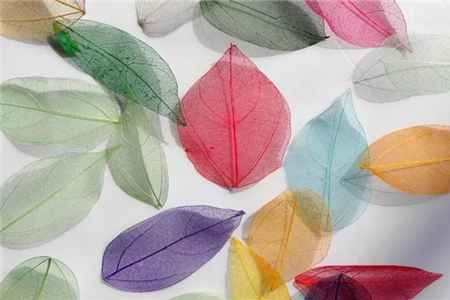
染好可以晾一下,一会儿就干了
这可以绑上穗子做书签,也可以扎成一束做叶脉花,插在香水瓶里发散香气,充当空气清新剂,既美观又实用
还能够做成叶脉风铃,剪出自己喜欢的形状,绑在线上,薄如羽翼的叶脉蝴蝶就能随风飘起~
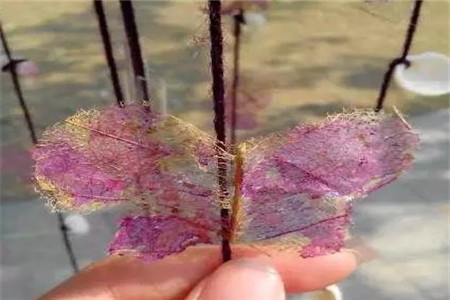
树叶做画
在树叶上涂满颜料,然后再白纸上按压10秒,就能收获一副“技术高超”的画啦
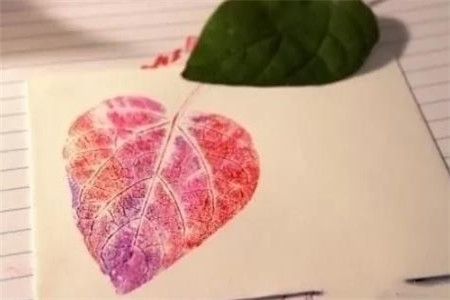
大一点的树叶可以涂更多的颜色,怎么样?人人都是艺术家!

让我们来看一下这位小“艺术家”的创作吧

嗯,经过妈妈的润色后,真的充满了艺术气息呢~

树叶装饰
有的花友就是喜欢叶子,觉得叶子百看不厌,另有一种感觉,那就可以试试把叶子直接做成房间装饰吧

相信大家都做过:把叶子夹在书里,做成标本

然后放到相框里,放在家里太衬气质了

不管是现代北欧风,还是复古中国风,都能hold住~

花花说的这些方法简单又实在。
0
0
文章
权问薇
2018年05月09日

月季
月季的种类丰富,花色鲜艳漂亮,深受广大花友的喜爱,但对于修剪这件事,大家要么不会,要么下不去手,这怎么能看到花开呢?

日常修剪:
1、剪掉老枝、弱枝。
①老枝和弱枝的存在会影响其他枝条对水分和营养的吸收,不能保证强壮枝条的需要。
②另外,剪掉老枝和弱枝还能降低植株感染病虫害的几率,提高月季的抗病能力,变得更健康。
2、剪掉盲枝、内向枝。
①盲枝就是那些停止生长不会出现芽点的枝条,这样的枝条留着只会夺取营养。
②剪掉向植株内向长的枝条,尤其是底部的枝条,有利于加强通风透光,减少病虫害的侵染,促进上部发芽出花苞。
3、剪掉枯叶、病叶和残花。
①一旦发现月季上有枯叶病叶,应及时剪掉,他们除了会和正常枝叶抢营养,还染上虫害,感染整株月季。
②赶上花期,开完的残花也要及时剪掉。
花后修剪:
1、单花月季如何复花,促进生新枝?
①月季快凋谢时,在花下方(有三片叶子的上边)倾斜45°剪一刀,能促进复花。
②在五片叶子上方0.5cm左右的地方倾斜45°剪一刀,能促进发出新的枝条。
2、多头月季如何丰花,发新枝?
①在每个花苞下端接近节点处剪掉,切口距离节点0.5cm左右即可,这样剪可以复花。
②在所有花苞的下方隔一条枝子剪下,这样剪可以促进月季发出新的枝条。
杜鹃
花花看到有很多花友询问杜鹃怎么修剪,其实无非就是想有一个好看的造型,重要的就是舍得动它。

日常修剪:
1、剪掉枯枝病叶。
枯枝病叶一是浪费营养和水分,二是容易引发病虫害,所以日常养护过程中,发现了就随手剪掉即可。
2、摘心打顶。
要想让杜鹃花长得更茂密,造型更丰满,时常摘心打顶就是一个好办法。剪掉顶芽能够促进侧芽的发育,能让杜鹃看起来更繁盛。
花后修剪:
1、剪掉所有残花。
杜鹃花枯萎之后不容易掉落,所以就要手动把残花都剪掉,这样才能促进两边发出新的枝芽。
2、剪掉重叠枝、徒长枝。
杜鹃的枝条长得过于密集会影响花后新芽的萌发,徒长枝一是浪费营养,二是影响杜鹃的整体造型,所以两者都要及时剪掉。
三角梅
三角梅成了花友们的新宠,看着人家八层楼高的花瀑布就眼馋,但可不是什么都不管就能长得好哟!一起来看看怎么修剪吧~

1、剪掉畸形枝、徒长枝、重叠枝。
畸形枝就是指那些长得扭曲,或者长在主枝之间发育不起来,还有平行生长的枝条,应该及时剪掉这些枝条促进新枝的发育。
重叠枝会让三角梅的枝条看起来过于繁琐,徒长枝会显得三角梅造型松散,这两者都应该在平时注意修剪掉。
2、剪掉弱枝、枯枝。
弱枝的生命力不如健壮的枝条强,即便是发芽也不如强枝好,及时剪掉可以保证强枝孕育更良好的枝芽。
枯枝已经不具备新生的能力,应该及时剪掉来促进新的枝条的发育。
栀子花
栀子不好好修剪容易徒长,掉花苞,不勤快的花友看完赶紧动起来!

日常修剪:
1、剪掉徒长枝、方向不好的枝。
枝条过长或者向主枝方向生长的枝条都应该剪掉,这样才能保证栀子生长的均衡。
2、剪掉枯叶病叶。
枯叶立即摘除否则会占用其他健康叶片的营养,病叶要剪的彻底,防止其他枝条叶片感染病患。
3、剪掉多余的花苞。
一个枝条上保留2~3个花苞即可,留下强壮的,剪掉弱小的,以免营养供应不足,开不了花。
4、花期剪掉花苞周围的叶片。
为了保证留下的花苞能正常开花,建议剪一剪花苞下面的大叶子,这样营养就会比较集中的供给花苞。
花后修剪:
1、剪掉残花。
栀子开完花时候要及时剪掉,否则会减缓新芽的出生。
2、摘心打顶。
花落之后,栀子会长出很多新的顶芽,这时候就可以进行摘心打顶的操作,剪掉部分顶芽,以促进侧芽的发育,使栀子长得更茂盛。
米兰
米兰在一年四季中都可以修剪,春天可以重剪,秋冬可以进行日常的修剪养护。

1、日常修剪主要剪的是徒长枝、内向枝、枯枝和病枝,这样能保证植株的正常通风透光,也能保证健壮枝条有充足的营养供应。
2、米兰发新芽之后,可以进行摘心操作,促进侧芽的发育。
3、春天可以重剪,就是把所有的枝条都剪掉,这样做的目的是让米兰多发侧枝,使植株横向发展,扩展树冠。
4、夏天温度高一般不建议进行大规模的修剪。
月季的种类丰富,花色鲜艳漂亮,深受广大花友的喜爱,但对于修剪这件事,大家要么不会,要么下不去手,这怎么能看到花开呢?

日常修剪:
1、剪掉老枝、弱枝。
①老枝和弱枝的存在会影响其他枝条对水分和营养的吸收,不能保证强壮枝条的需要。
②另外,剪掉老枝和弱枝还能降低植株感染病虫害的几率,提高月季的抗病能力,变得更健康。
2、剪掉盲枝、内向枝。
①盲枝就是那些停止生长不会出现芽点的枝条,这样的枝条留着只会夺取营养。
②剪掉向植株内向长的枝条,尤其是底部的枝条,有利于加强通风透光,减少病虫害的侵染,促进上部发芽出花苞。
3、剪掉枯叶、病叶和残花。
①一旦发现月季上有枯叶病叶,应及时剪掉,他们除了会和正常枝叶抢营养,还染上虫害,感染整株月季。
②赶上花期,开完的残花也要及时剪掉。
花后修剪:
1、单花月季如何复花,促进生新枝?
①月季快凋谢时,在花下方(有三片叶子的上边)倾斜45°剪一刀,能促进复花。
②在五片叶子上方0.5cm左右的地方倾斜45°剪一刀,能促进发出新的枝条。
2、多头月季如何丰花,发新枝?
①在每个花苞下端接近节点处剪掉,切口距离节点0.5cm左右即可,这样剪可以复花。
②在所有花苞的下方隔一条枝子剪下,这样剪可以促进月季发出新的枝条。
杜鹃
花花看到有很多花友询问杜鹃怎么修剪,其实无非就是想有一个好看的造型,重要的就是舍得动它。

日常修剪:
1、剪掉枯枝病叶。
枯枝病叶一是浪费营养和水分,二是容易引发病虫害,所以日常养护过程中,发现了就随手剪掉即可。
2、摘心打顶。
要想让杜鹃花长得更茂密,造型更丰满,时常摘心打顶就是一个好办法。剪掉顶芽能够促进侧芽的发育,能让杜鹃看起来更繁盛。
花后修剪:
1、剪掉所有残花。
杜鹃花枯萎之后不容易掉落,所以就要手动把残花都剪掉,这样才能促进两边发出新的枝芽。
2、剪掉重叠枝、徒长枝。
杜鹃的枝条长得过于密集会影响花后新芽的萌发,徒长枝一是浪费营养,二是影响杜鹃的整体造型,所以两者都要及时剪掉。
三角梅
三角梅成了花友们的新宠,看着人家八层楼高的花瀑布就眼馋,但可不是什么都不管就能长得好哟!一起来看看怎么修剪吧~

1、剪掉畸形枝、徒长枝、重叠枝。
畸形枝就是指那些长得扭曲,或者长在主枝之间发育不起来,还有平行生长的枝条,应该及时剪掉这些枝条促进新枝的发育。
重叠枝会让三角梅的枝条看起来过于繁琐,徒长枝会显得三角梅造型松散,这两者都应该在平时注意修剪掉。
2、剪掉弱枝、枯枝。
弱枝的生命力不如健壮的枝条强,即便是发芽也不如强枝好,及时剪掉可以保证强枝孕育更良好的枝芽。
枯枝已经不具备新生的能力,应该及时剪掉来促进新的枝条的发育。
栀子花
栀子不好好修剪容易徒长,掉花苞,不勤快的花友看完赶紧动起来!

日常修剪:
1、剪掉徒长枝、方向不好的枝。
枝条过长或者向主枝方向生长的枝条都应该剪掉,这样才能保证栀子生长的均衡。
2、剪掉枯叶病叶。
枯叶立即摘除否则会占用其他健康叶片的营养,病叶要剪的彻底,防止其他枝条叶片感染病患。
3、剪掉多余的花苞。
一个枝条上保留2~3个花苞即可,留下强壮的,剪掉弱小的,以免营养供应不足,开不了花。
4、花期剪掉花苞周围的叶片。
为了保证留下的花苞能正常开花,建议剪一剪花苞下面的大叶子,这样营养就会比较集中的供给花苞。
花后修剪:
1、剪掉残花。
栀子开完花时候要及时剪掉,否则会减缓新芽的出生。
2、摘心打顶。
花落之后,栀子会长出很多新的顶芽,这时候就可以进行摘心打顶的操作,剪掉部分顶芽,以促进侧芽的发育,使栀子长得更茂盛。
米兰
米兰在一年四季中都可以修剪,春天可以重剪,秋冬可以进行日常的修剪养护。

1、日常修剪主要剪的是徒长枝、内向枝、枯枝和病枝,这样能保证植株的正常通风透光,也能保证健壮枝条有充足的营养供应。
2、米兰发新芽之后,可以进行摘心操作,促进侧芽的发育。
3、春天可以重剪,就是把所有的枝条都剪掉,这样做的目的是让米兰多发侧枝,使植株横向发展,扩展树冠。
4、夏天温度高一般不建议进行大规模的修剪。
2
4
文章
巴黎铁塔
2018年05月09日
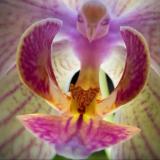
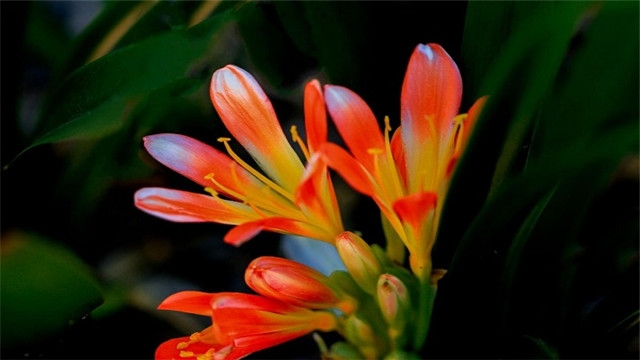
1、减少光照
原因:君子兰不能够放到阳光下曝晒,否则它的叶子会被强烈的阳光所灼伤,出现发黄的症状。
解决方法:使用遮阴网为君子兰遮阴,或是干脆将它移动到太阳不能直接照射到的地方。
2、增加浇水
原因:长时间的没有为君子兰浇水,会导致君子兰缺水,呼吸、光合等生理活动没有办法正常进行,从而使得叶子发黄。
解决方法:适量及时的为君子兰浇水,当土壤开始发干的时候就赶紧浇水。

3、减少浇水
原因:平时浇的水太多,君子兰无法及时吸收,多余的水分就会残留在土壤之中。这样土壤中的根须就会泡在水中,难以接触到充足的氧气,从而使得根须转变为无氧呼吸方式,产生乙醇,对根部造成伤害。根部一旦被伤到,就无法正常汲取营养,而叶片缺乏营养,就容易变黄。
解决方法:若是情况比较严重,需要将君子兰从土壤中取出另行栽种,若是情况没有那么严重,可以将花盆放到通风处,将土中的水吹干并减少浇水。
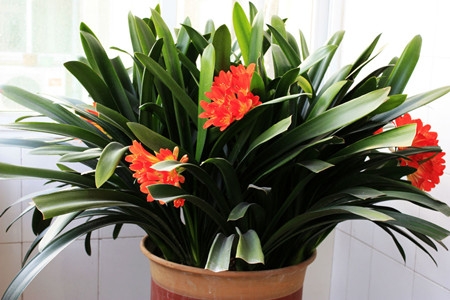
4、无需处理
原因:若是君子兰的年龄比较大,随着正常的新陈代谢,也会出现一些黄叶。
解决方法:这种情况无需多做处理,只需要正常养护一段时间,它就能够恢复正常了。
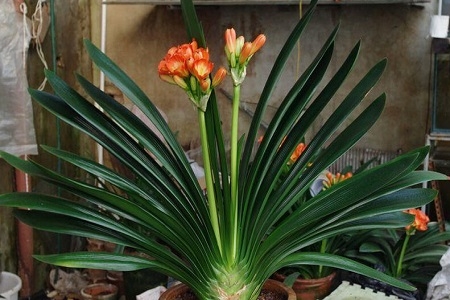
1
1
文章
巴黎铁塔
2018年05月09日


1、减少光照
原因:富贵竹在强光下曝晒时间过长,叶子上就会长出黄斑,整片叶子看起来就呈黄色,没有光泽。
解决方法:将富贵竹移到室内有散射光的地方,慢慢养护。
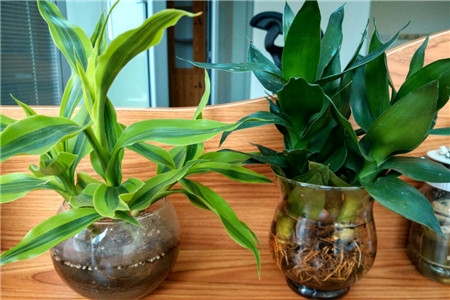
2、增加光照
原因:富贵竹长时间处于过于阴蔽的地方,没有足够的阳光进行光合作用,叶片无法合成养分,进而发黄。
解决方法:将它搬到阳光充足而不强烈的地方养护。
3、剪根重栽
原因:平时浇的水太多或是施的肥太多,就会对富贵竹的根部产生影响。轻则引起根部发黑,重则导致根系腐烂。根系受到伤害后会直接影响养分吸收的效率,导致叶片缺少营养,开始发黄。
解决方法:将富贵竹从水中或是土中取出,观察根须,用消过毒的剪子将黑、烂的根须剪掉。之后再往伤口处喷一些药剂进行杀菌,然后放到阴凉处晾干。等到药剂干掉以后,再用新的介质进行培养。
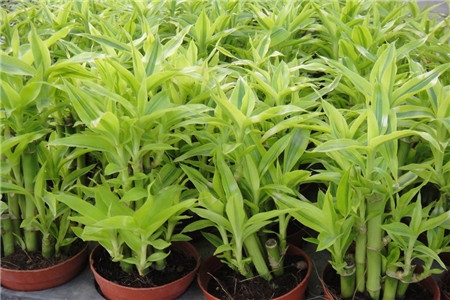
4、多浇些水
原因:水是富贵竹光合作用反应的原料,一旦缺水就会导致叶片它无法正产进行光合作用合成养分,从而发黄。
解决方法:多给富贵竹浇一些水,保证足够的水分供给。
5、补充肥料
原因:长时间不给富贵竹施肥,就会导致植株的能汲取到的养分不足,叶片没有养分就会发黄。
解决方法:给富贵竹追施一些肥料,但是不能施的太多,要薄肥勤施。

0
0
文章
巴黎铁塔
2018年05月09日


1、增加浇水
原因:水是发财树一系列生理反应的原料,长时间缺水会导致它部分生理功能瘫痪,从而使得叶片发黄。
解决方法:适量及时的为发财树浇水,保证盆土湿润。
2、减少浇水
原因:给发财树浇了太多的水,导致土壤中出现积水。植株的根部泡在水中,容易被泡烂,从而影响到了养分的汲取,导致叶片变黄。
解决方法:情况不是很严重的时候可以将花盆垫高放到通风处,让土壤中的水分挥发掉并减少浇水。情况比较严重的话要将发财树整个取出,剪掉被泡烂了的根系,再放到新的土壤中养殖。
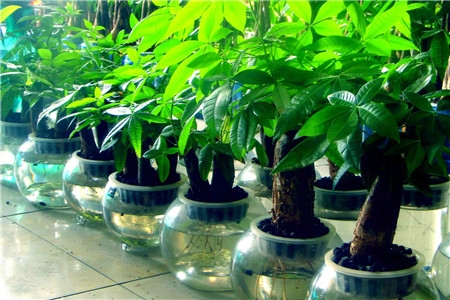
3、减少光照
原因:若是夏天的时候没有为发财树遮阴,让它长时间在强光下暴晒,它的叶子就会被灼伤,进而变黄。
解决方法:将发财树移动到光线明亮但不会被太阳直射到的地方养护。
4、补充肥料
原因:长时间不给发财树施肥也有可能导致它难以从土壤之中汲取到足够的养分,从而导致叶片发黄。
解决方法:为发财树使用一些肥料或是营养液,施加之前要注意将之稀释一下,以免浓度过高伤害到植株。

5、适量剪枝
原因:发财树长得太过于繁茂,叶片之间互相遮挡,导致每片叶子都难以接受到足够的光照,或者是因为叶片过多,根部汲取的养分难以供应所有的叶片正常生长,就有可能出现黄叶。
解决方法:及时修剪,将枝叶比较密集的地方剪疏,并剪掉瘦弱的发育不良的枝叶。
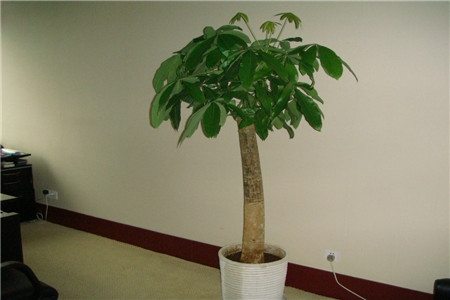
0
0



